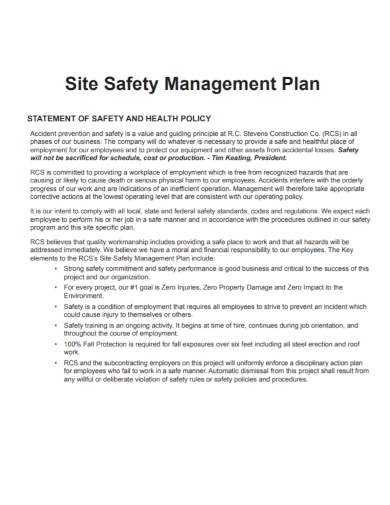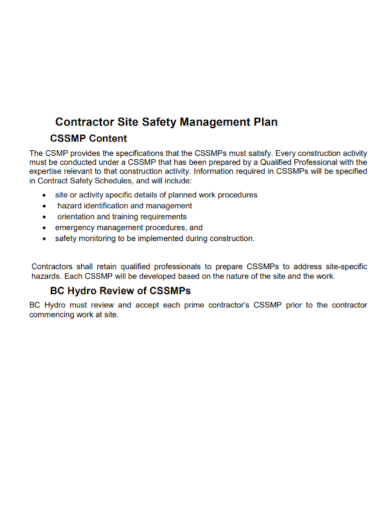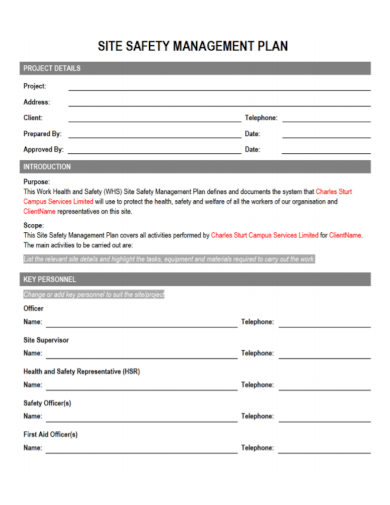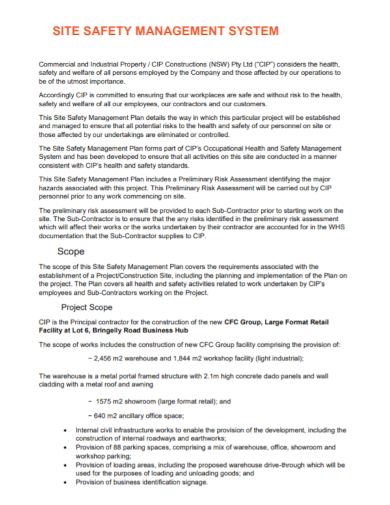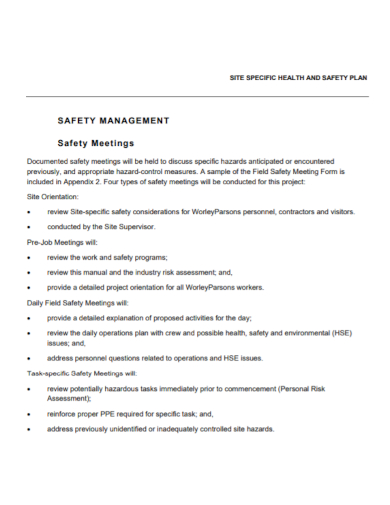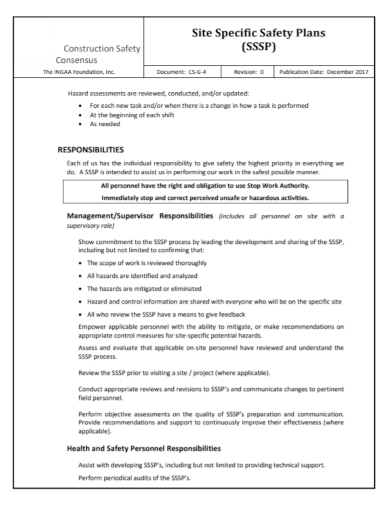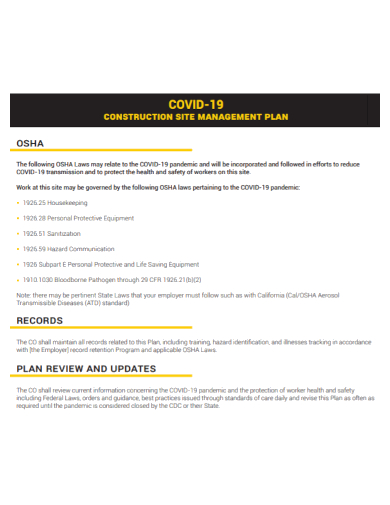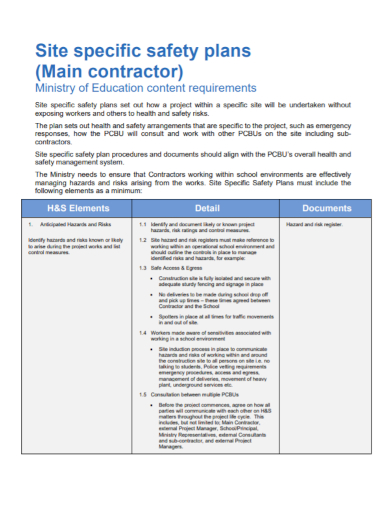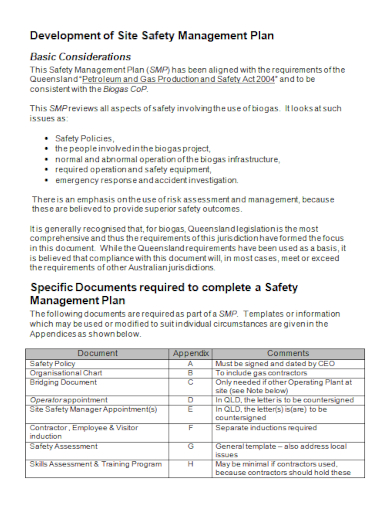Work sites have always been dynamic workplaces that continuously engage all sorts of workers and employees in activities that may expose them to a wide variety of health and safety hazards. These hazards could be from falling objects, falling from heights and scaffolding, operating heavy machinery, or the use of electrical circuits. Health and safety hazards are unique to every workplace and these are only a few of those hazards. There are workplaces where exposure to safety risks are significantly lower than others, but the risks are still there anyways. Employee safety is and should always be a priority for every workplace. especially in hazardous worksites like construction sites, laboratories, traffic, and other workplaces where employees are continuously exposed factors that can have a negative impact on one’s health. This is why for most contractors and employers, developing a site safety management plan is as important as getting the job done.
The goal of a site safety management plan is to ensure that the worksite, and the industry as a whole, do not cause immediate danger to the public and to the environment all around it, especially those in the immediate vicinity or the site. Not only that, safety management plans also cover events that may happen due to possible accidents. A well written safety management plan takes care of the effected employee or employees, making sure that they are well taken care of until their full recovery. But what does it take to ensure that the site safety management plan is well written? Well, a lot of things actually. So for now, we will be trying our best to give you a relatively crude idea of what a well written safety management plan looks like and how to write them. First off, take a look at these site safety management plan samples listed below to help you have an idea of what the whole document is about and what components it usually is made of.
8+ Site Safety Management Plan Samples
1. Site Safety Management Plan
2. Contractor Site Safety Management Plan
3. Sample Site Safety Management Plan
4. Site Safety Management System Plan
5. Site Specific Health and Safety Management Plan
6. Construction Site Specific Safety Management Plan
7. Covid-19 Site Safety Management Plan
8. Contractor Site Safety Management System Plan
9. Site Development Safety Management Plan
What Is a Site Safety Management Plan?
A site safety management plan is a document that outline all the procedures, rules and regulations that will be implemented in the workplace. This document should dictate the procedures that will protect the employees over the whole duration of their work. Site safety management plans not only work to protect and prevent the employees from workplace accidents, it also lays out the necessary response to an accident should something unfortunate happens. It should cover most of it like rescue operations, first-aid treatments, medical services, post-incident care and reviews. Even though site safety management plans are usually drafted even before a project enters development, it should remain as a live document. Meaning that it is susceptible to change over time as things change around the workplace. It should be able to adapt and cater to the needs of the employees should specific needs arise.
How to Write a Site Safety Management Plan
The plan should be written as clearly and comprehensibly as possible. It’s best to make sure that everybody is aware of the procedures and policies set in place by the safety management plan. There are several broad factors that need to be covered and you have to make sure that everything is discussed thoroughly and comprehensibly, not leaving any detail behind. The key components that you have to keep in mind in writing a successful site safety management plan are as listed and discussed below.
- Policy and commitment
The plan should establish a proper health and safety policy structure as to have something for the workplace to properly follow. The structure should implement the chain of command for set responsibilities and would ultimately determine who is accountable and responsible for a certain division of employees or for those who deal with other specializations. Also list out who is responsible for important factors such as the compliance to health and safety duties, develop relevant policies, information dissemination, employee consultation, site safety training, and the overall budget for the safety management plan to be implemented. - Employee consultation
A system that is built for the sake of the employees, should prioritize the involvement of the employees. It should ensure that workers are well informed about the policies that will be implemented, risks, solutions for the risks, and most importantly, the opportunity for the employees to provide meaningful input. Employers should also take this opportunity to get to know their employees to gauge their inputs and opinions regarding matters that talk about their health and safety in the workplace. - Develop site safety procedures
The procedures and policies you will be implementing will depend on the size and nature of your company and/or the workplace. Procedures like hazard management, incident report, performance management, and health consultations, are common to most workplaces. Other protocols may be required in much more specialized spaces like in laboratories where mostly hazardous chemicals are stored and such. Overall, this component should dictate the overall effectiveness of your plan so be sure to take the time to check everything and have every possible hazard accounted for. - Continuous improvement
The development of your site safety management plan does not stop when you are done writing the plan. It should remain as a ‘live’ document, which means that you should be able to constantly review your system’s strengths and weaknesses, making sure that it accurately reflects how you and your employees would want to manage site and workplace safety.
FAQs
Why do we have a site safety plan?
A site safety plan controls and prevents safety hazards on a worksite. Safety management plans help contain collateral damage when an accident occurs at the workplace.
What are the three E’s of safety?
Evaluation, Education, and Enforcement.
What are the four basic principles of safety management?
Safety Policy. Safety Risk Management. Safety Assurance. Safety Promotion.
Overall, having the right procedures, systems, and training in place are really valuable aspects to make sure that health and safety breaches are prevented in the workplace. And even if accidents do happen, you will have a working system in place that takes care of your employees and makes sure that they can recover quickly from whatever injury they may have sustained. Site and workplace safety is and should always will be important. Every time. Everywhere.
Related Posts
FREE 10+ Higher Education Lesson Plan Samples in MS Word | Pages | Google Docs | PDF
FREE 9+ 30-Day Marketing Plan Samples in PDF | MS Word | Apple Pages | Google Docs
FREE 3+ Sales Team Action Plan Samples in PDF | MS Word | Apple Pages | Google Docs
Marketing Plan For Small Business Samples
FREE 7+ Fashion Business Plan Samples in PDF
FREE 10+ Sprint Planning Samples In MS Word | Google Docs | PDF
FREE 10+ Wedding Planning Samples in MS Word | Apple Pages | Powerpoint | PDF
FREE 9+ Monthly Study Planner Samples in PSD | Illustrator | InDesign | PDF
FREE 9+ Sample Curriculum Planning Templates in PDF | MS Word
FREE 10+ Teacher Development Plan Samples in MS Word | Google Docs | Apple Pages | PDF
FREE 10+ Basketball Practice Plan Samples in PDF
FREE 12+ School Business Plan Samples in PDF | MS Word | Apple Pages | Google Docs
FREE 7+ Client Strategic Plan Samples in PDF | MS Word
FREE 11+ Trucking Business Plan Templates in PDF | MS Word | Google Docs | Pages
FREE 7+ Small Hotel Business Plan Samples PDF | MS Word | Apple Pages | Google Docs

